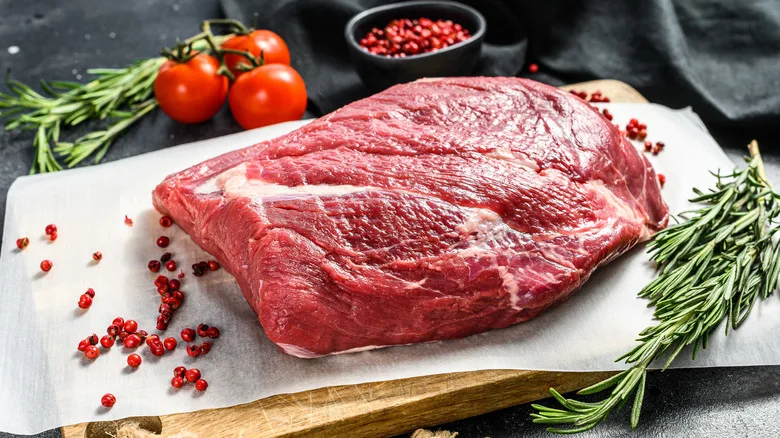Smart Cooking: Selecting Between The Top And Bottom Rounds
When you enter a grocery store or butcher shop, the variety of beef cuts available might easily overwhelm you. Both the top round and the bottom round are often confused. Although they can first seem to be the same, knowing the distinctions will help you choose the right cut for the recipe. For those who have ever had any queries, this article will provide a straightforward explanation of top round vs. bottom round.
Their Distinctive Features
These slices are from the cow’s back leg, which requires a lot of effort and yields lean meat. The inner thigh is used for the top round, while the outside part of the leg is used for the bottom round. The taste and texture are significantly affected by that little locational variation.
Top round is popular for recipes like roast beef or London broil since it’s often a little more tender. The bottom round, meanwhile, tastes more like beef but is harder. It takes more time to prepare, but it becomes a filling and substantial choice.
Taste And Feel
Texture is often the decisive element when comparing top round vs bottom round. After roasting, the top round is a wonderful choice for slicing thin because it is lean without being too chewy. Because of this, deli-style sandwiches often utilize it.
It is firmer on the bottom and might become tough if cooked too rapidly. But it becomes soft meat with a deep, meaty flavor when cooked slowly, like in a pot roast or stew. A dependable option if you want strong taste and don’t mind lengthier cooking periods is bottom round.
How To Prepare Them
When deciding between these two slices, the cooking method is the primary factor.
- Top Round: The top round is best grilled or broiled before being thinly cut across the grain. This technique increases the taste and tenderness of marinades.
- Bottom Round: This round is perfect for stewing or braising, which are slow, wet cooking techniques. It takes some time to soften, but the result is a tasty, cozy meal.
Since both pieces are lean, it’s crucial to avoid overcooking them. To keep the meat juicy, use moderate heat and allow it to rest before slicing.
Value and Cost
Both cuts are reasonably priced, which makes them excellent options for families or anybody keeping an eye on shopping expenses. Due to its ease of preparation and little tenderness, top round is often significantly more expensive. The less expensive alternative is often bottom round, but it takes more work in the kitchen.
Either way, both may be tasty when prepared properly and provide a decent quantity of protein for the cost.
What Should You Pick?
The choice is based on what you intend to prepare. For sandwiches, use top round if you want something that’s easy to roast and slice. When preparing a slow-cooked cuisine, such as a braised dish, pot roast, or stew, bottom round is the superior option.
Although these cuts are thinner than more expensive steaks, when prepared correctly, they have great taste. They may become the focal point of your dinner table with a little care.
Conclusion
Matching the cut to the appropriate cooking process is the key to understanding the difference between top round and bottom round. For rapid roasts and thin slices, the top round is ideal since it is lean and somewhat more delicate. Slow cooking produces a more robust yet intensely flavored bottom round.
The next time you’re at the butcher counter, you’ll feel more certain if you remember these essentials. You’ll know just which cut to select—and how to transform it into a dinner worth enjoying—instead of relying on guesswork.






